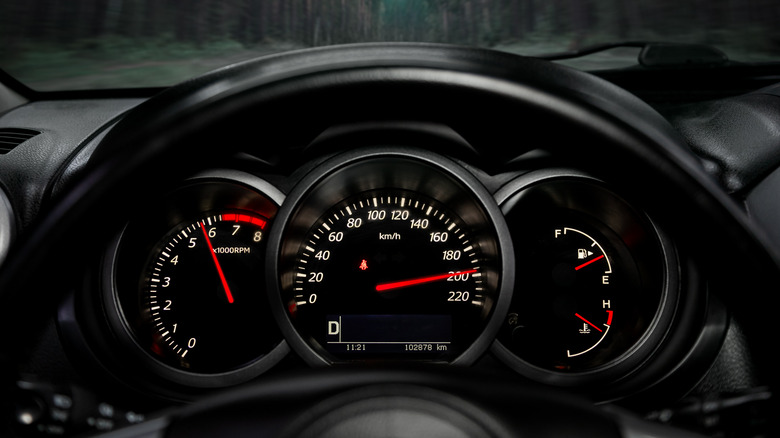Why You Should Avoid Revving Your Engine For A Quick Warm-Up
Winter is almost upon us, and as temperatures drop, drivers everywhere face the unpleasant task of getting into the cold as part of their commutes. Many try to make this ordeal more tolerable by letting their cars idle to warm it up before getting on the road. They may also rev their engines immediately after starting their vehicle, hoping to speed up the process, believing it'll help the engine warm up faster. Doing so is incredibly tempting if they're running short on time.
The problem with this common practice is revving your engine can cause rapid temperature changes and undue stress on engine components, ultimately doing more harm than good. When you rev your engine, you put the pedal to the metal, increasing its RPMs while your car is in neutral or park. This forces the engine to work harder than necessary, which can cause wear and tear on your car's vital components, shortening the life of your engine.
The downsides of engine revving in cold weather
We often unwittingly do things that hurt our cars, and revving our engines to warm them up quickly is a common one. While revving your engine might seem like a quick fix to warm it up in cold weather, it can actually lead to significant engine damage. This is because when temperatures drop, the oil in your engine thickens. This thickened oil flows more slowly than in warmer temperatures, taking longer to reach and adequately lubricate your engine's moving parts.
Revving your cold engine warms it up too fast and forces it to operate at high speeds without proper lubrication. As you can imagine, this can cause all sorts of things to go wrong, including increased wear on pistons, bearings, and other moving parts. Since engines use more fuel when operating at higher RPMs, increased fuel consumption is another consequence of revving your engine in an attempt to warm it up faster. You're also not doing the environment any favors when you rev your engine, as it increases emissions of harmful pollutants due to incomplete fuel combustion in a cold engine.
Warm up your car without the wear and tear
If winters are especially cold where you live, you'll probably want to defrost the windows and increase the temperature enough, so you're not shivering during the first part of your drive. Adding a remote starter or block heater is an easy way to do this while avoiding the damage revving your engine can cause.
Block heaters, also known as engine warmers, are designed to preheat the engine and its fluids before you start it. If you leave your car outdoors in regions that experience extreme cold, the antifreeze can turn into a gel, and oil can thicken, which could strain or damage your engine when you start your car. These devices make it easier to start the engine in cold weather, which reduces engine wear and tear and allows your car's heater to start working faster. However, unless you live in a region where temperatures drop below five degrees Fahrenheit, you can probably go without a block heater.
A remote start is a good choice if you live in a region where temperatures get cold but not cold enough to cause engine coolant to solidify or become too thick to function properly. Remote starts won't do much to protect your car's engine in sub-zero weather, but they do go a long way toward helping you stay warm by allowing you to start your car and warm it up before going outside.


